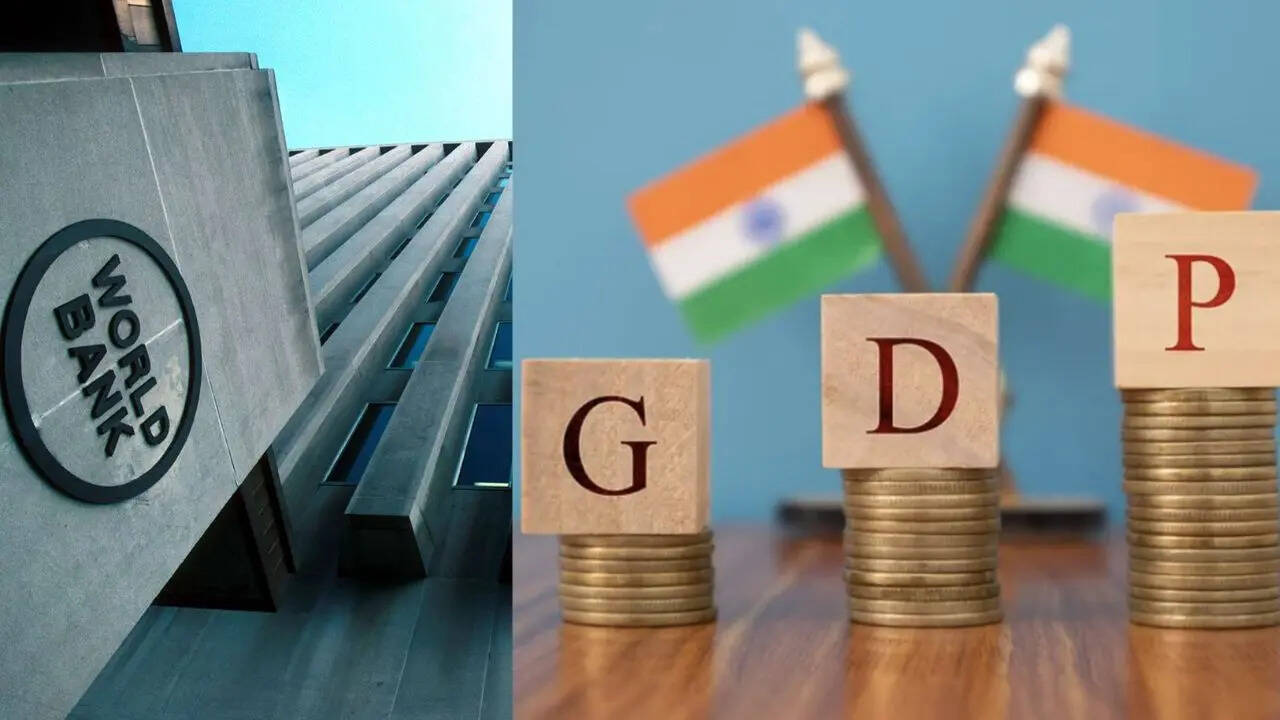Economysummary
World Bank Trims India’s 2026 GDP Growth Forecast To 6.3% From 6.7% Amid Global Headwinds
The World Bank has downgraded India’s GDP growth forecast for FY2025-26 to 6.3 per cent from its earlier estimate of 6.7 per cent, citing weaker exports and slowing investment. However, India is set to retain its position as the fastest-growing major economy amid a backdrop of subdued global expansion.

The multilateral agency pointed to heightened global policy uncertainty as a key drag on investment sentiment.
India’s economic momentum is set to ease slightly in the coming fiscal year, with the World Bank revising its 2026 GDP growth forecast downward to 6.3 per cent from 6.7 per cent, citing weaker exports and a slowdown in investment activity. The latest projections were published in the Bank’s Global Economic Prospects report, which also lowered global growth expectations to 2.3 per cent in 2025 — the slowest pace outside of global recessions since 2008.
Despite the downgrade, India continues to stand out globally. “India will remain the fastest-growing major economy,” the report stated, with growth expected to recover to an average of 6.6 per cent during FY2026–27 and FY2027–28, driven in part by a rebound in the services sector and stronger export activity, as reported by TOI.
The multilateral agency pointed to heightened global policy uncertainty as a key drag on investment sentiment. “Investment growth is expected to slow, primarily reflecting a surge in global policy uncertainty,” the report said.
There is some cause for optimism. The World Bank noted that inflation in India is likely to remain contained, assuming normal seasonal conditions, and the country is expected to continue along the path of fiscal consolidation. “Fiscal consolidation is expected to continue in India over the forecast horizon, with growing tax revenues and declining current expenditures projected to contribute to a gradual decline in the public debt-to-GDP ratio,” the report noted.
To combat broader macroeconomic challenges, Indermit Gill, Chief Economist of the World Bank Group, advocated for lowering global trade barriers and implementing structural reforms. “Most developing economies today tend to have far higher tariffs than high-income economies. If their goal is to accelerate growth, their best course of action will be to lower tariffs with respect to trading partners,” said Gill, adding that reducing tariffs by half could lift global growth by 0.2 percentage points in both 2025 and 2026.
Gill also emphasised the need for restoring fiscal discipline and accelerating job creation, particularly in developing economies. His remarks come amid a broader push for recalibrating global economic strategies to address lingering post-pandemic challenges, geopolitical tensions, and inflationary pressures.
India’s services sector and resilient domestic consumption remain bright spots, helping to buffer the impact of weaker global demand. Still, policy clarity, trade facilitation, and labour market reforms will be key to sustaining medium-term growth and enhancing India’s competitiveness on the global stage.
Samannay Biswas author
Working as Copy Editor at the Business Desk of Times Now Digital. Dedicated towards crafting interesting financial stories. Previously covered financi...View More
End of Article
Subscribe to our daily Newsletter!






Trump’s Gold Smartphone vs 'Obama Phone': Here’s What Sets Them Apart

Oswal Pumps IPO Day 3: Oversubscribed 3X, GMP Jumps 9% - Should You Buy Before It Lists?

Why Vishal Mega Mart Shares Are Falling Today?

India's Unemployment Spikes In May: Youth, Women Worst Hit - What the New Data Reveals

AI Will Replace You? What Top Tech CEOs Say












